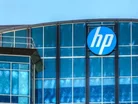Hewlett Packard On Innovating To Attract Millennial Talent

The millennials are arriving in vast numbers. A formidable breed of tech-savvy individuals is entering the workforce en masse, with their own high expectations of how modern enterprises should operate. These are the digital natives, people born in the last two decades of the previous millennium, whose lives have been dominated by mobile devices and social media. Electronic communications are the norm for this generation and they want technologies that speak their language—a workplace that allows them to operate at their full potential.
In their world everything and everyone is connected and they are tuned into innovation. Their lives are built on the constant consumption of information and nonstop exchange of opinions. These are the minds of the future, and they don’t want to be constrained by what they perceive as outdated work practices.
To avoid appearing as passé in this highly connected world, organisations must adapt to the new millennial mindset. That involves bridging the consumer and enterprise experience and transforming the way traditional IT in the workplace looks, feels and operates.
Technologies For The Millennial Mindset
The work engagement profile of millennials is closely tied to next-generation technologies and communications that deliver immediate results. For organisations to remain competitive, this means:
- Transforming applications to the cloud so that employees have a user experience that matches the potential of their personal technology.
- Leveraging everything-as-a-service to give them access to workplace tools anywhere, anytime and on any device.
- Stepping-up cyber-attack protection to ensure the mobile user still has secure access to applications and information.
- Embracing gamification by using elements of game mechanics and techniques to engage employees and customers while influencing their behaviour.
- Making use of big data to analyse and engage with customers who expect information and services to be personalised and targeted at them.
Moving Applications to Cloud
In the New Style of IT, employees should be empowered by tools that enable greater levels of autonomy, data access and flexibility to work in better and more efficient ways. Enterprises can achieve this by developing an effective application modernisation strategy focused on a smooth and seamless transformation to both cloud and mobile computing.
A transformed applications portfolio enables organisations to bring innovative new services to market faster, more intelligently and at a lower cost. And if the approach is well-planned, it should deliver cloud and mobility-based business value quickly with minimal disruption.
Delivering Everything-As-A-Service
Enterprise-delivered IT services are often viewed as cumbersome and non-responsive to the needs of a modern business. By adopting cloud and mobile platforms, organisations can provide everything-as-a-service and meet the expectations of millennials for fast, any-device access to data, services and applications.
This effectively frees users from relying on the enterprise network to enable more flexible and lower-cost choose-your-own-device (CYOD) and bring-your-own-device (BYOD) models.
The transition can be made seamlessly through a hybrid cloud strategy which integrates small, manageable pieces of new technology in phases. Such a solution delivers on-demand capacity for the rapid deployment of new applications as they are needed to meet changing workplace requirements.
Beefing Up Cybersecurity
Enhancing mobility and supporting user-owned devices in the workplace is aimed at increasing productivity and employee satisfaction—but it’s not without risks. Organisations need to implement an effective security strategy for mobile solutions while also protecting supplier networks.
Security breaches can significantly damage an organisation’s reputation and shareholder value and lead to costly litigation. Because no organisation can be 100 percent secure, it’s important to develop a solid response strategy. This needs to embrace prevention and real-time threat detection from the application layer to the hardware and software interface.
Introducing Gamification—More Than A Game
Gaining insights into what motivates employees is vital for influencing behaviour and helping organisations meet their goals. Initiatives such as ‘employee of the month’ are useful, but are limited in scope and take time to deliver results.
Gamification is a new discipline which uses design techniques from gaming to engage people on a deeper level and in a business context. Modelling interactions with employees can be useful in understanding human behaviour in real situations, with metrics and feedback mechanisms used to adjust behaviour and achieve desired results.
Reward, recognition, a sense of accomplishment, competitiveness, ambition and pure fun are all used in gamification to understand and influence behaviour.
Making Use Of Big Data
As with employees, the millennial experience is transforming the expectations of customers. The spread of mobile devices, networking and social media is delivering instant one-on-one interactions with organisations for personalised service. The danger is that if that doesn’t happen, customers can easily go elsewhere.
With the right technologies, organisations can collect big data from a multitude of sources and use sophisticated analytics to extract real meaning. By deploying sentiment analysis, it’s possible to tease out the implications of these interactions and glean new consumer insights to create a truly differentiated experience.
Innovating To Attract Millennial Talent
For the first time a new generation of employees is entering the workforce, often with a better grasp of technology as a key business tool, when compared to more senior staff.
Organisations that want to attract the smartest and most innovative of these millennial minds need to embrace next-generation technologies. Otherwise, talent will be lost to competitors.
The shift to the millennial enterprise does not have to be onerous or complex. By creating a business roadmap that breaks down the modernisation program into manageable steps, key goals can be met quickly and cost-effectively.
The reward is being regarded as innovative among the digital natives – a key attraction point for future success.



